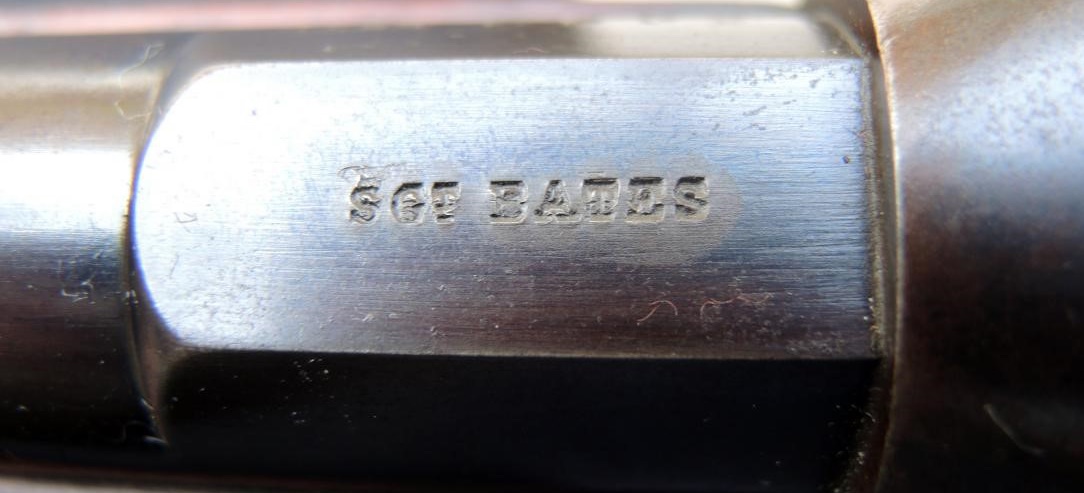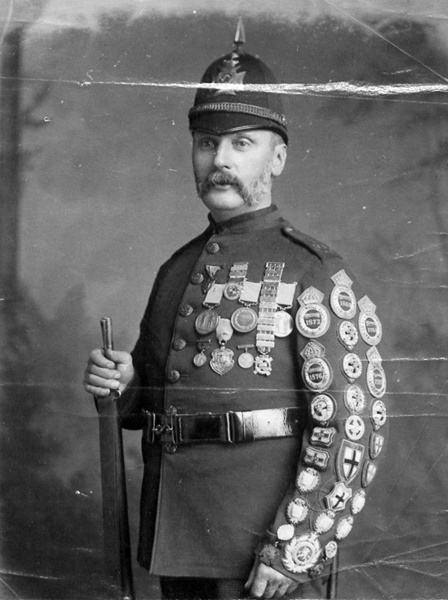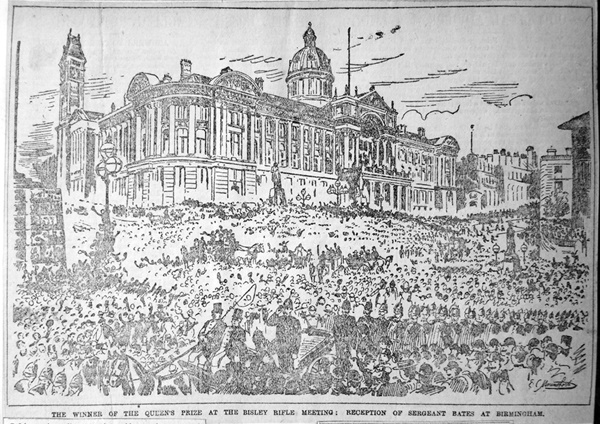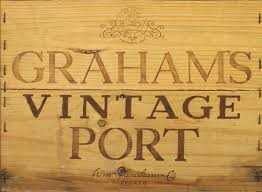Sgt Bates Martini Henry Rifle
Well travelled rifle
21st December 2021 | by Chris Large, Specialist on behalf of Wilson55
Henry Bates Martini-Henry Rifle

We are pleased to include several Martini-Henry rifles in our 10th February 2022 Firearms, Arms and Militaria auction but one example really stands out. This is a volunteer Martini-Henry MkIII made by P. Webley and Son Birmingham to standard military patterns but intended for volunteer forces. More on that later. The mark that sets this rifle apart is ‘Sgt Bates’ stamped to the knox form and also to the barrel.
Click here to view the 10th February 2022 Auction.

Sergeant Bates
The name “Sgt Bates” relates to Henry Bates of the 1st (Birmingham) Volunteer Battalion of the Royal Warwickshire Regiment who was promoted to Sergeant on 1 November 1885. Henry Bates was born in Birmingham in January 1842. By the time he was 18 he was an apprentice gold-chain maker to a Mr Goode of Vyse Street in Birmingham’s jewellery quarter and was married in 1865. In 1867 Bates joined the 1st (Birmingham) Volunteer Battalion of the Royal Warwickshire Regiment. Proficiency with a rifle was encouraged by competition shooting, and Pte Bates soon earned a reputation as an outstanding marksman, initially using a .577 calibre Enfield Pattern 1853 muzzleloading rifle. By 1869 he was winning the first of a number of national competitions at Wimbledon Common. However, the top honour for Volunteers was the Queen’s Prize, and this was to elude Bates for more than twenty years.

Sgt Henry Bates, 1887 (age 45). (The National Archives)
In March 1880, aged 38, Henry Bates was promoted to Corporal. His reputation in Birmingham as a marksman was well established, and within a year or so he was recruited by The Field Rifle Company of 2 King Alfred’s Place, Broad Street, as a Sighter & Tester. The Field Rifle Co. was one of many in Birmingham (such as the Birmingham Small Arms & Metal Co.) involved in the manufacture of volunteer rifles.
In September 1882, Cpl Bates was selected for the team of British Rifle Volunteers to shoot against the American National Guard at Creedmore, New York, at ranges from 200 to 1,000 yards. Most of the British team used Gibbs-Metford falling-block rifles, but some, including Bates, used Webley-Wyley rifles with an unusual side-swinging block action. The British team won overall, in addition to his team medal, Bates won the open individual Judd Match comprising seven shots, standing, at 200 yards. The match attracted 250 entrants. Cpl Bates’ prize was an underlever single-shot Ballard rifle donated by the Marlin Firearms Company and valued at $70.00 (about $2,110.00/£1,560.00 today). The Ballard prize rifle (donated by the Bates family) is now on display at the Museum of the NRA, Bisley. A return match against the American National Guard took place in July 1883 at Wimbledon. Again, Cpl Bates was selected for the British team, and again the Americans came second.
In 1884, Bates left the employment of The Field Rifle Co., and set up in business as a gunsmith at 246 Holliday Street. Trading on his reputation, much of Bates’ work involved improving the accuracy of Martini-Henry rifles supplied by Field’s, which he then sold on to Volunteer target shooters. On 1 November 1885 Bates was promoted by his battalion to Sergeant.
By 1890, shooting at Wimbledon Common had become unsafe owing to encroaching suburban development in the area. The venue for the Imperial Meeting was moved to a new range complex on Bisley Common. Although the regular British Army had started to adopt the .303 Lee-Metford rifle in 1889, most of the Colonial forces and the British Volunteer Force continued to use the .577/450 Martini-Henry, and this was the rifle used in 1890 at Bisley Camp. The .577/450 Martini-Henry rifle, firing a black powder cartridge, had first been trialled by the NRA at Wimbledon in 1871, and they continued to be manufactured in Birmingham for the Colonies up until 1896. The Volunteers continued using the Martini-Henry in matches at Bisley until 1896. In 1897 they finally switched to the Lee-Metford rifle, firing the .303 cartridge using cordite smokeless propellant.
The Queen's Prize
In 1890 The Queen’s Prize competition was held over three stages, with the third taking place on Tuesday 22 July. This comprised ten scoring shots at 800 yards and a further ten shots at 900 yards. Henry Bates was by this time 48 years old and in the twilight of his illustrious shooting career. Using a Field rifle finished and tested by himself, and competing against the top marksmen from across the Empire, Bates held his nerve on this occasion, and finished eight points ahead of the second place shooter, much to the delight of the large crowd of spectators who gave their support to the popular veteran marksman. Sgt Henry Bates was thus the winner of the first ever Queen’s Prize competition held at Bisley, and was justifiably regarded as the world’s greatest military rifle shooter.

Council House Square (now Victoria Square), Birmingham, on Saturday 26 July 1890. Sgt Henry Bates GM, standing in the open landau, salutes the massive crowd. (Birmingham Owl, 1 August 1890)
It was Saturday evening, 26 July 1890, when Sgt Henry Bates eventually returned to Birmingham by train. Word of his success at Bisley had spread throughout the city, and tens of thousands packed the streets to welcome their hero home. On arrival, Sgt Bates, in uniform, was transferred to an open landau, pulled by a pair of Grays. Led by the regimental band, and escorted by the members of his battalion, the procession pushed its way with great difficulty through the wildly cheering crowds from Snow Hill Station to the battalion’s headquarters in Thorp Street. Bates stood in the open carriage the whole way, saluting the crowd. Such jubilant scenes had not been witnessed in Birmingham since the visit of Vice Admiral Horatio Nelson in 1802. Sadly, the Mayor of Birmingham (a Quaker) was an avowed pacifist, and had refused to hold a Civic Reception for Henry Bates. The initial official celebrations were held at the Battalion HQ, and Sgt Bates with his Gold Medal was presented to the clamouring throng in the street below by his commanding officer from an open window of the Officers Mess. Following harsh criticism in the local Press, the City Council did pass a resolution on 30 July congratulating Sgt Henry Bates, and a formal dinner to honour Sgt Bates’ achievement was later held by the Battalion in October 1890.

Bates Martini-Henry Rifles.
It is known from advertisements of the period that Bates improved, finished and sold Webley rifles to target shooters, as well as rifles supplied to him by his former employer, Field’s. The knox form of the rifle and barrel are clearly marked with his name. The absence of the letters “GM” after his name (signifying Gold Medal) illustrates that he sold the rifle, included in our February auction, prior to winning the Queen’s Prize in 1890. Nothing is known about the original purchaser of the rifle from Bates, but it seems to have been a customer in the Colony of Victoria, Australia.

Bates Martini-Henry Rifle provenance.
The rifle surfaces in the late 20th century in the collection of Graeme Johnstone, State Coroner of Victoria. Johnstone famously conducted the inquest in 2005 into the disappearance and death, some 37 years previously, of Australian Prime Minister, Harold Holt. Graeme was friendly with the current vendor of the rifle and explained that he’d acquired the Martini Henry from a retired GP in Melbourne, Dr Harley Baxter, who’d told him that it was well known amongst the Australian collecting community, and that it was considered to be of historical interest. The rifle appeared at auction in 2011 but it is unclear if it sold or not. When Graeme passed away in 2012 his family sold his firearm collection to a dealer in the rural town of Colac, 95 miles west of Melbourne. The rifle presumably among the collection was then bought by a Mr Raymond Garrow, who intended to shoot it in historic military rifle matches in Victoria. A friend of the vendor found out of the rifles presence in Raymond Garrow’s collection and brokered a deal with the current vendor, in 2016 around 130 years after it left this country the Webley Martini Bates rifle returned to the UK.
Volunteer Martini-Henry rifles.
The rifle is a volunteer example, indicated by the lack of any Govt markings on the action body. The Volunteer Force, created in 1859, was not part of the regular British Army, but comprised a county-based reserve and home defence force of some 250,000, approved by the War Office, but manned by civilians. All of their uniforms and equipment were procured locally, and funded either by the men themselves, by wealthy benefactors or by local fund raising efforts. Local communities took great pride in their Volunteers. Rifles used by the Volunteers, therefore, were not regular British Army issue, but were “bought from trade”. They were usually very similar to the British Army service pattern, but often not identical. Manufactured by P Webley & Son with a serial number of 6900 or 0069 depending which way round you view the gun, the rifle is based on the Mark III service pattern introduced from 1885 specifically for reserve and volunteer forces. The Mark III featured more interchangeable parts than the Mark II issued to the regular Army (as used in the Anglo-Zulu War of 1879), and was less costly to manufacture than the Mark II. The Mark III proved popular with Colonial administrations. This particular rifle was not made for a Government contract, but for sale through the trade. It is fitted with the Mark II forend, probably because these were readily available at the time of manufacture. It is difficult to date this rifle exactly since they were marketed commercially until at least the 1890s. Webley was not a high volume producer and sadly, factory records for P Webley & Son during this period have not survived. The markings suggest a date between 1885 and 1890.
The rifle will be sold as part of our 10th February 2022 sale. Should you have any items you would like to sell in one of our Firearms, Arms and Militaria sales we would be pleased to hear from you. For more information please contact Chris Large on 01270 623878 or email chris.large@wilson55.com
Click here to view the 10th February 2022 auction.
